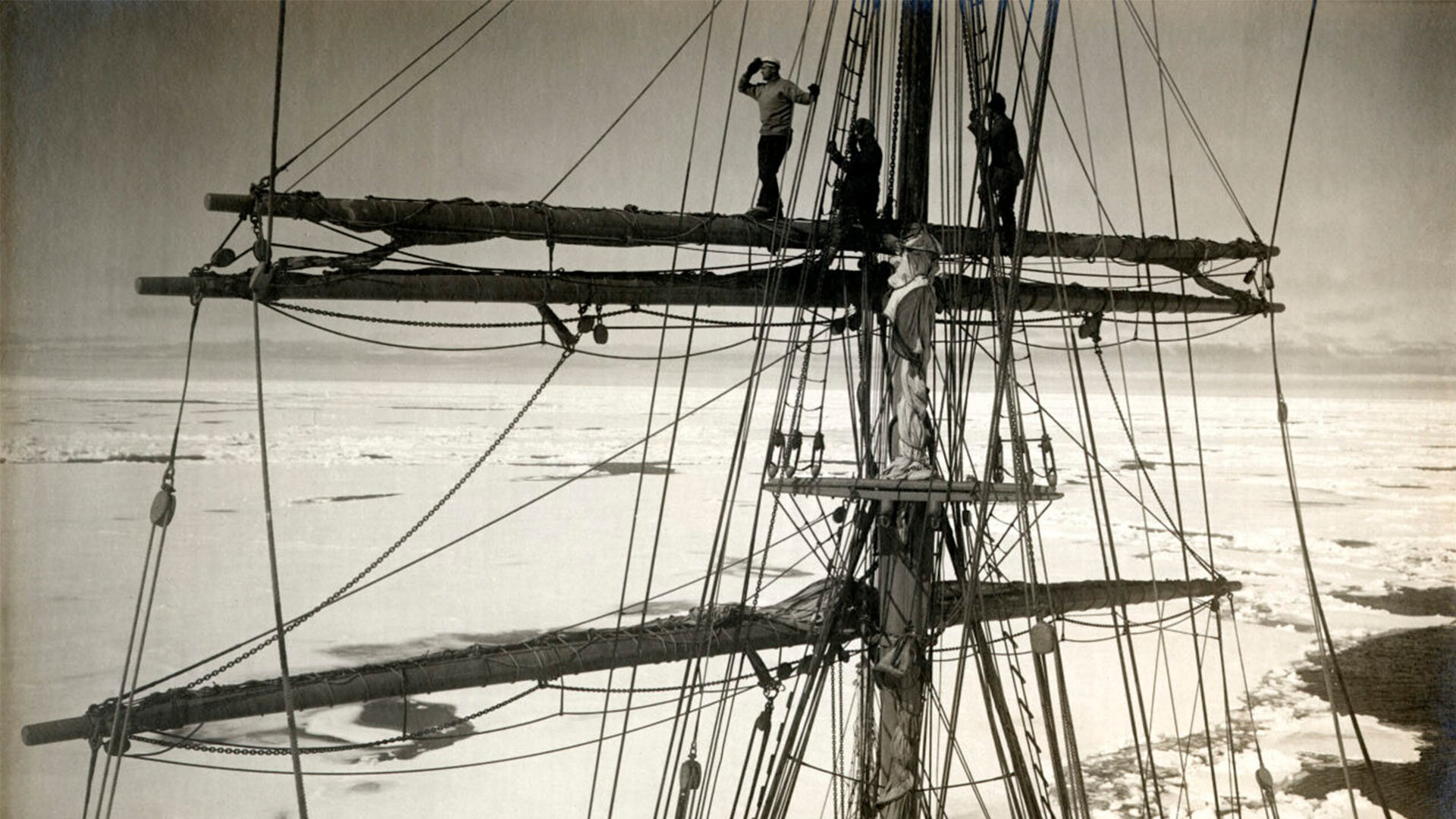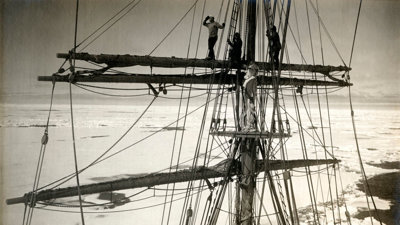In 1909 Captain Robert Falcon Scott announced that he would be returning to the Antarctic to try and reach the South Pole which had nearly been reached by Ernest Shackleton on his British Antarctic Expedition earlier that year. Although Scott had some support from the Royal Geographical Society and the British Government, he had to raise most of the funds himself.
He could not afford to commission a new exploring ship. Remembering how well the expedition ship Discovery had performed during his first expedition, he tried to buy her back from her new owners, the Hudson’s Bay Company (HBC).
Unfortunately for Scott the HBC also found Discovery to be a very useful ship and so they declined to sell her. As a second choice, Scott was able to purchase the Terra Nova, a large Scottish sealer which had also taken part in his first expedition, for £12,500.
Building Terra Nova
Terra Nova was built in Dundee in 1884 for the Scottish sealing industry and as she was designed for Arctic waters, she was immensely strong. Once the blubber tanks were removed from her hold, she also had ample cargo space.
Like many ships of her age Terra Nova was essentially a sailing ship fitted with a steam engine. The engine was not very economical and as coal was a heavy and bulky cargo, the sails were employed for much of the journey south.

Despite being Scott’s second choice, Terra Nova acquitted herself well during the expedition.
Documenting exploration
Accompanying Scott on the expedition was the renowned war and travel photographer, Herbert Ponting. He was quite prepared to take risks for the perfect picture. To get this shot showing lookouts, Tryggve Gran, Griffith Taylor and Charles Wright high up the mainmast, he had to climb the mizzenmast with his bulky camera.
Not only are Ponting's photographs a visual record of the expedition's journey but they also serve as a powerful testament to human endurance and the spirit of exploration.
Further readings
Bryan, Rorke. Ordeal by ice: ships of the Antarctic. Barnsley: Seaforth Publishing, 2011.
Riffenburgh, Beau (et al.) With Scott to the Pole: the Terra Nova Expedition 1910-1913: the Photographs of Herbert Ponting. London: Bloomsbury, 2004.
Ponting, Herbert. The great white South, being an account of experiences with Captain Scott's South Pole Expedition and of the Nature life of the Antarctic. London: J. Duckworth & Co., 1921.
